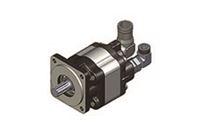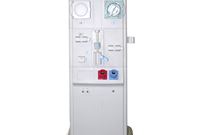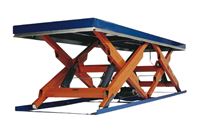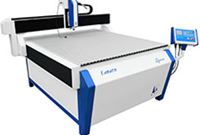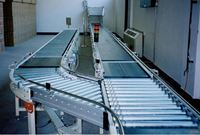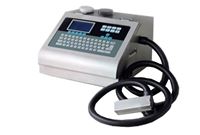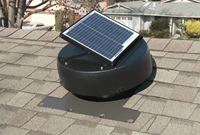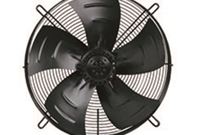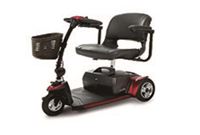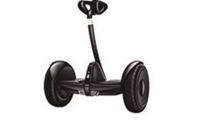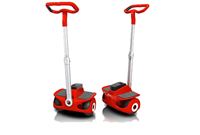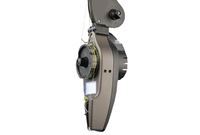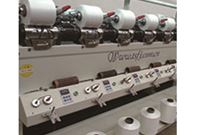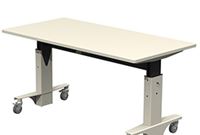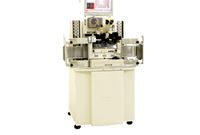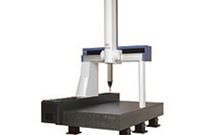- Q: What are the advantages of using a brushless motor versus a brush type motor?
- A:
No brush noise, efficient, durable, robust, easy to cool
Synchronous speed control
Position and Speed Servo (open/closed loop)
Customizable Performance
Extended Life with higher reliability
- Q: What is a brushless motor?
- A:
A Brushless DC (BLDC) motor is a rotating electric machine where the stator is a classicthree-phase stator like that of an induction motor and the rotor has surface-mounted permanent magnets. In this respect, the BLDC motor is equivalent to a reversed DC commutator motor(or brush motor), in which the magnet rotates while the conductors remain stationary. In the DCcommutator motor, the current polarity is altered by the commutator and brushes. On the contrary, in the Brushless DC motor, the polarity reversal is performed by power transistors switching insynchronization with the rotor position.
Therefore, BLDC motors often incorporate either internalor external position sensors to sense the actual rotor position or the position can be detectedwithout sensors. The BLDC motor is driven by rectangular voltage strokes coupled with the givenrotor position. The generated stator flux interacts with the rotor flux, which is generated by arotor magnet, defines the torque and thus speeds of the motor. The voltage strokes must be properlyapplied to the two phases of the three-phase winding system so that the angle between the statorflux and the rotor flux is kept close to 90° to get the maximum generated torque. Due to this fact, the motor requires electronic control for proper operation.
- Q: What is the integrated control brushless motor?
- A:
IMS can provide BLDC motors with OR without integrated control options. The internal control option is a cost effective solution; however, it is restricted by voltage range, operating temperature, and current draw. The BLDC motors with internal control are normally designed for light and relatively constant load applications, such as fans, pumps, and small household appliances. If more output power or alternate voltage ranges are required, an external control is recommended.
- Q: Does IMS have any BLDC motor withsensorless drive?
- A:
Ordinarily, brushless DC motors utilize Hall Effect Devices (HFD) to sense the rotor position which subsequently enables an electronic device known as a drive to commutate the motor. With the development of microchip technology, the Sensorless BLDC drives do not require HFD’s to provide feedback from the motor. Instead, sensorless BLDC drives detect a motor’s naturally produced back-EMF to determine the best method of commutation. The most common technique uses a ramp-up pattern to energize two motor phases while monitoring the third phase for back-EMF. This technique requires the drive to initially orient the rotor to a known position. Next, two phases are energized based on a ramp-up pattern such as AB-AC-BC-BA-CA-CB. As the motor increases speed, a proportionate amount of back-EMF is produced by the motor on the non-energized phase. When the amount of back-EMF becomes sufficient enough for the drive to sense, the drive will switch over from the ramp-up technique to a back-EMF, “zero-crossing”, technique.
Sensorless brushless DC drives can be internal OR external of the motor body. From a mechanical construction standing point, it is more reliable than hall sensor type drives, because it eliminates the usage of HFD’s, which eliminates a potential failure mode. But from the electric side, it is less reliable than a sensor type because of its two immanent characteristics:
***The DC motor must easily rotate at a minimal speed under light load conditions to generate sufficient back-EMF for the drive to sense.
***Sudden changes in the load can cause the back-EMF loop to become out of sync and result in a loss of speed and torque.
So the short answer is “Yes”, IMS can provide a motor with sensorless drive, however usage of a sensorless drive is really dependent on the detailed requirements of the application.
- Q: How do I control speed and keep it constant?
- A:
A sophisticated control system would be required to keep the speed regulated to a tight tolerance. Utilizing an encoder feedback, the customer’s control can monitor and adjust the 0-5VDC input to <1%. This will allow the closed loop speed regulation needed for tighter tolerance speed control. Current tolerance on speed regulation for standard integrated controls is <5%. Speed can be regulated over a range of torques. This is a key benefit when comparing BLDC to brush motors.
- Q: Are there any noise benefits of a Brushless motor?
- A:
Yes, with the elimination of brushes, BLDC motors can be regulated to slower operating speeds without sacrificing torque. Brushless motors can also utilize skewed magnets to reduce the effect of cogging. For even higher requirement noise sensitive applications, we could utilize the sine-wave driver to reduce the noise even lower.
- Q: How much life can I expect from a Brushless motor?
- A:
The life expectations of a BLDC motor are dependent on the operating conditions and environment, mostly like other small dc motors. However, because of the advantages of the brushless motor compared to a brush type motor, a BLDC motor-only will have minimal wear on the bearings and will have a relatively longer life span under “ideal” conditions. Also, high radial and axial loads will affect the life of the bearings, therefore, reducing life of the BLDC motor.
- Q: What types of magnets are used in the IMS brushless motors?
- A:
IMS utilizes several types of magnets for our motor assemblies. The BLDC motor is typically constructed using bonded neodymium magnets for design consideration of the power to weight ratio. Other options are available, such as samarium cobalt, sintered neodymium and rubberized ferrite. The sealternates can be utilized, but usually it depends on the application requirement, production volume, target cost, etc.
- Q: Does IMS carry outer rotor and inner rotor motors? What are the advantages between the two?
- A:
IMS can provide outer rotor motors, but only for specialized OEM projects. They are not a standard product offering. The advantage of an outer rotor motor is torque. These smaller packages can produce more torque than there equivalent inner rotor size motors. This is accomplished by the larger moment arm of the rotating outer rotor magnet. One disadvantage is speed capability. If high speeds exceeding 6,000 RPM are required, it is recommended you utilize an inner rotor construction motor. If your application requires an outer rotor motor, please contact us today at info@intermotionsupply.com for more information.
- Q: Can IMS brushless motors be run as servo motors?
- A:
IMS motor construction will not handle precision-sensitive low speed servo motion. Our design of pole and slot construction is intended for applications like pumps, rotary motion or speed control. Applications that require low speed and accurate position control should consider using a stepper motor with encoder or our Brushless Servo Motor.
